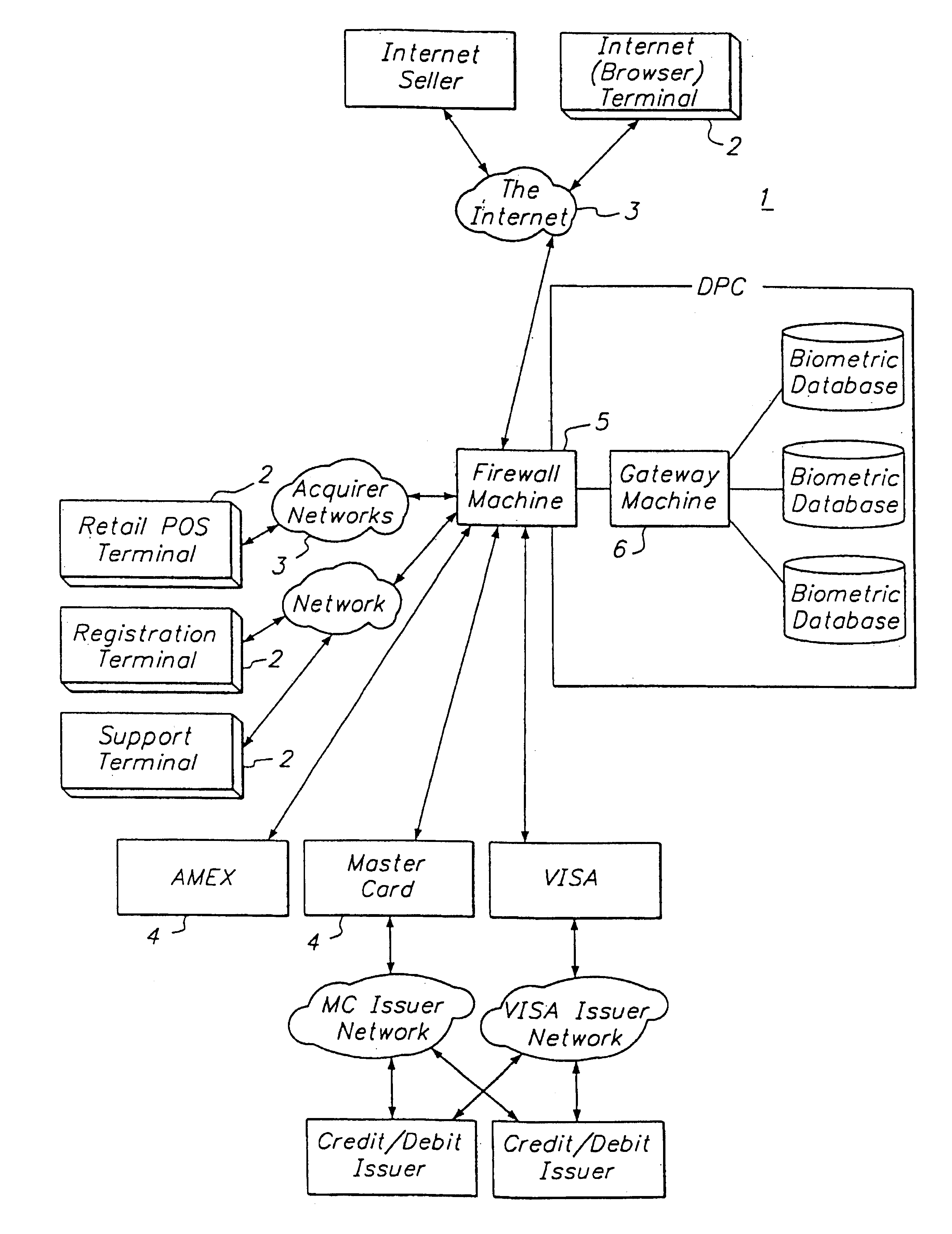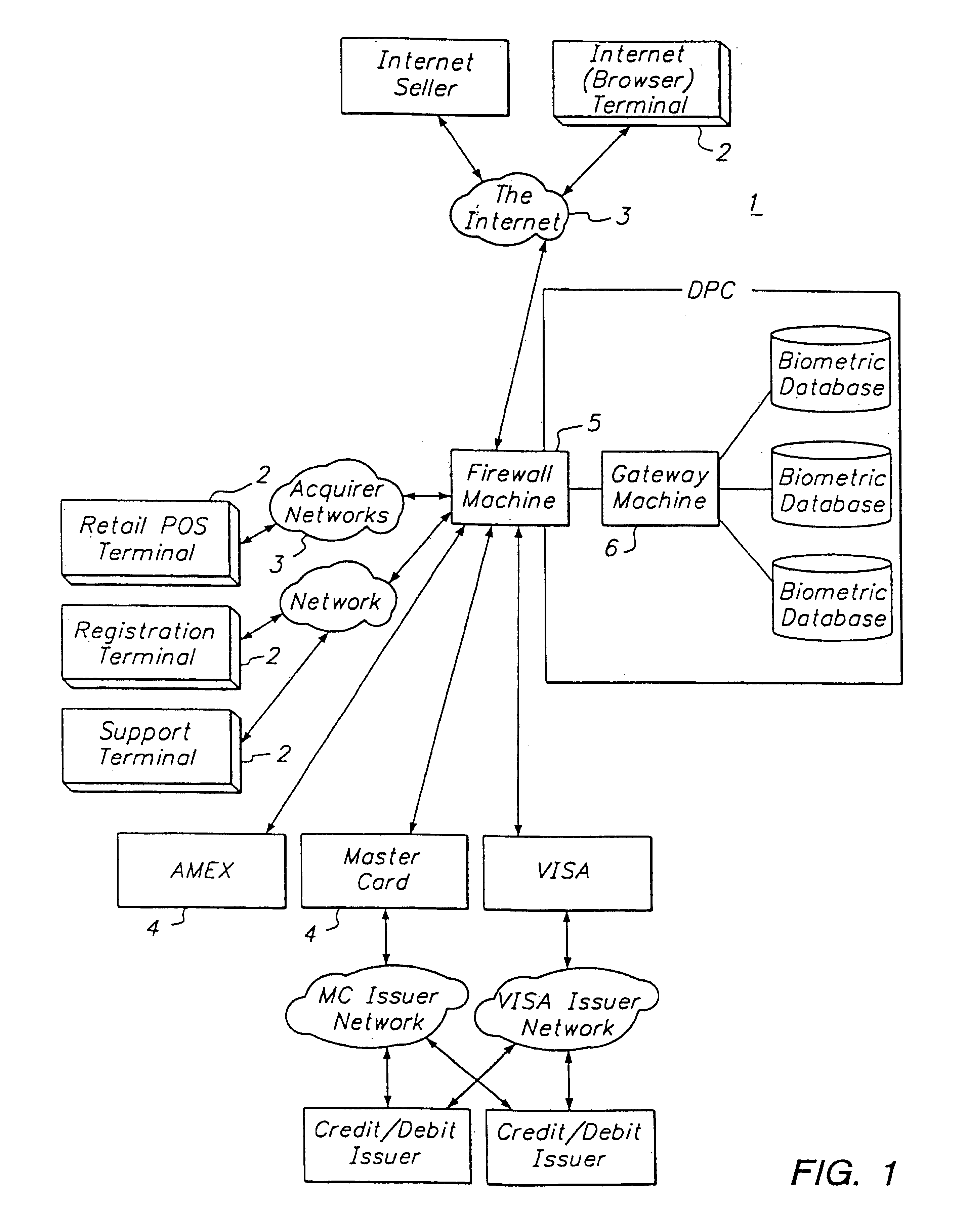Tokenless electronic transaction system
a technology of electronic transaction and tokens, applied in the complete banking system, volume measurement, computer security arrangements, etc., can solve the problems of increasing fraud from counterfeit credit cards, easy conversion of lost credit cards into cash, and loss of industry fraud losses, etc., to achieve simple and cost-effective
- Summary
- Abstract
- Description
- Claims
- Application Information
AI Technical Summary
Benefits of technology
Problems solved by technology
Method used
Image
Examples
Embodiment Construction
[0072]The objective of this invention is to provide a tokenless method for identifying buyers for the purpose of authorizing financial transactions. It is the essence of this invention that consumers have the ability to conduct these transactions without the use of any tokens, credit cards, badges or identification cards including drivers licenses. In order to be functional it is important that the system operate at speeds similar to those currently in operation for completing financial transactions such as credit card purchases and ATM services. The system must be secure, such that buyers' records and their biometric information remain confidential and safe, both within the computer system that identifies the buyer and authorizes transactions, as well as during collection and transfer of authentication information between the computer system and the remote sites with which the computer system communicates.
[0073]Furthermore, the system must be reliable in that errors in identificati...
PUM
 Login to View More
Login to View More Abstract
Description
Claims
Application Information
 Login to View More
Login to View More - R&D
- Intellectual Property
- Life Sciences
- Materials
- Tech Scout
- Unparalleled Data Quality
- Higher Quality Content
- 60% Fewer Hallucinations
Browse by: Latest US Patents, China's latest patents, Technical Efficacy Thesaurus, Application Domain, Technology Topic, Popular Technical Reports.
© 2025 PatSnap. All rights reserved.Legal|Privacy policy|Modern Slavery Act Transparency Statement|Sitemap|About US| Contact US: help@patsnap.com



